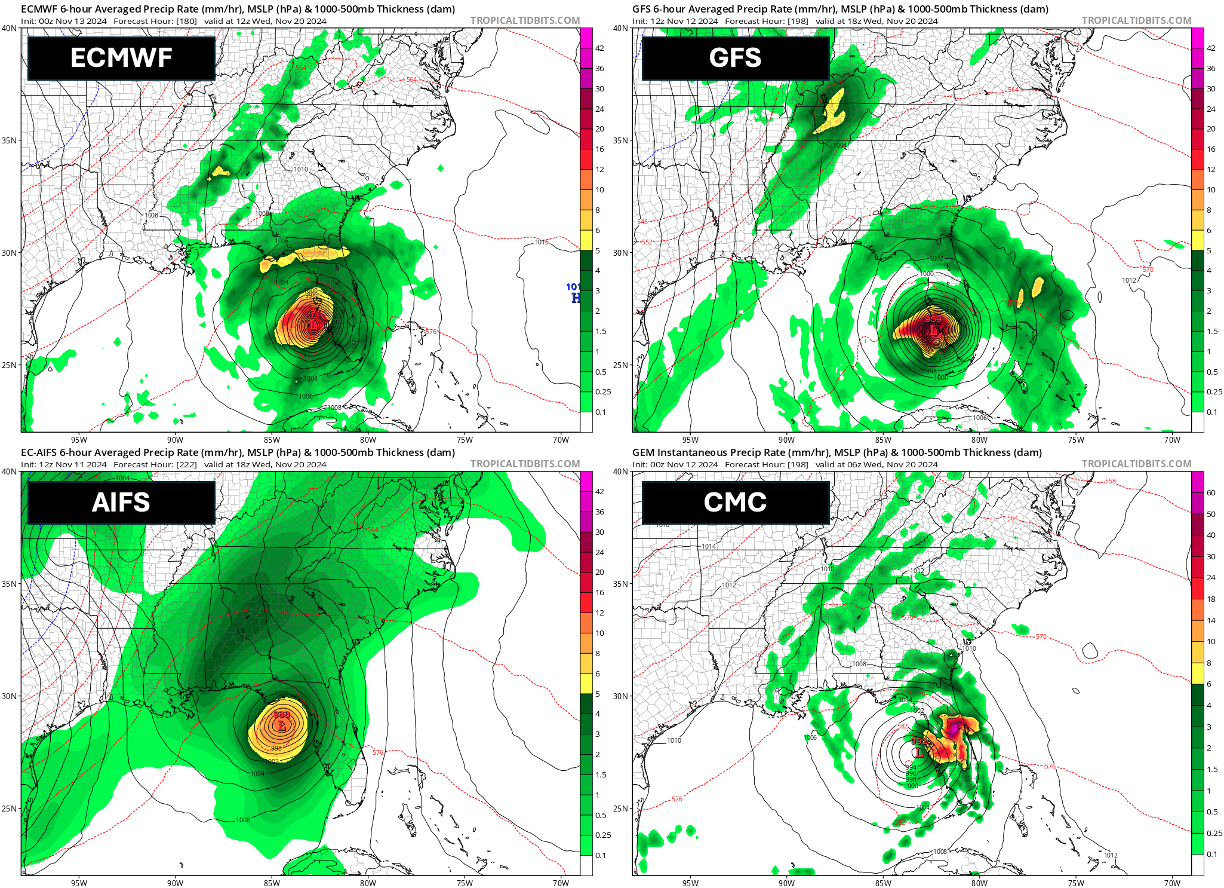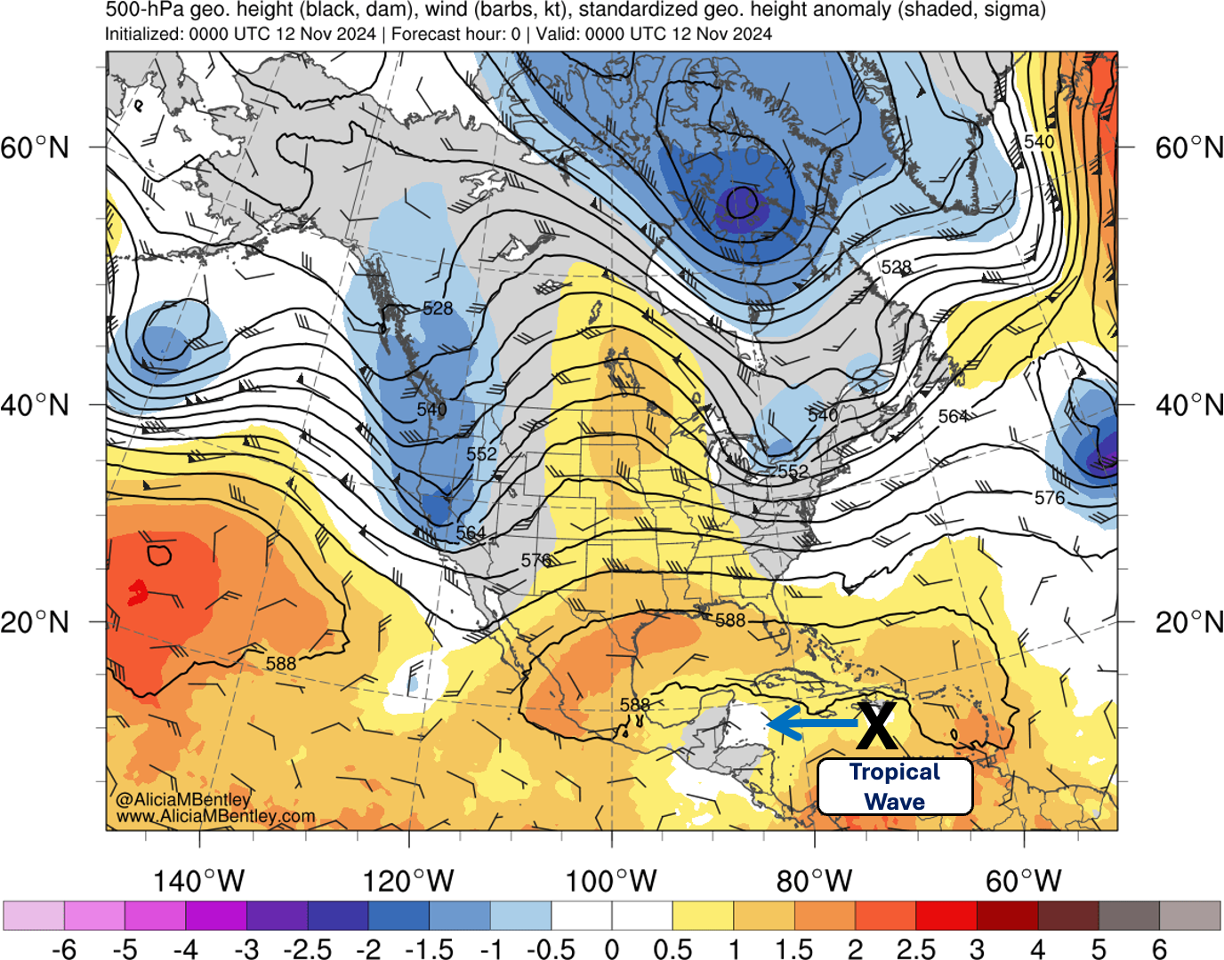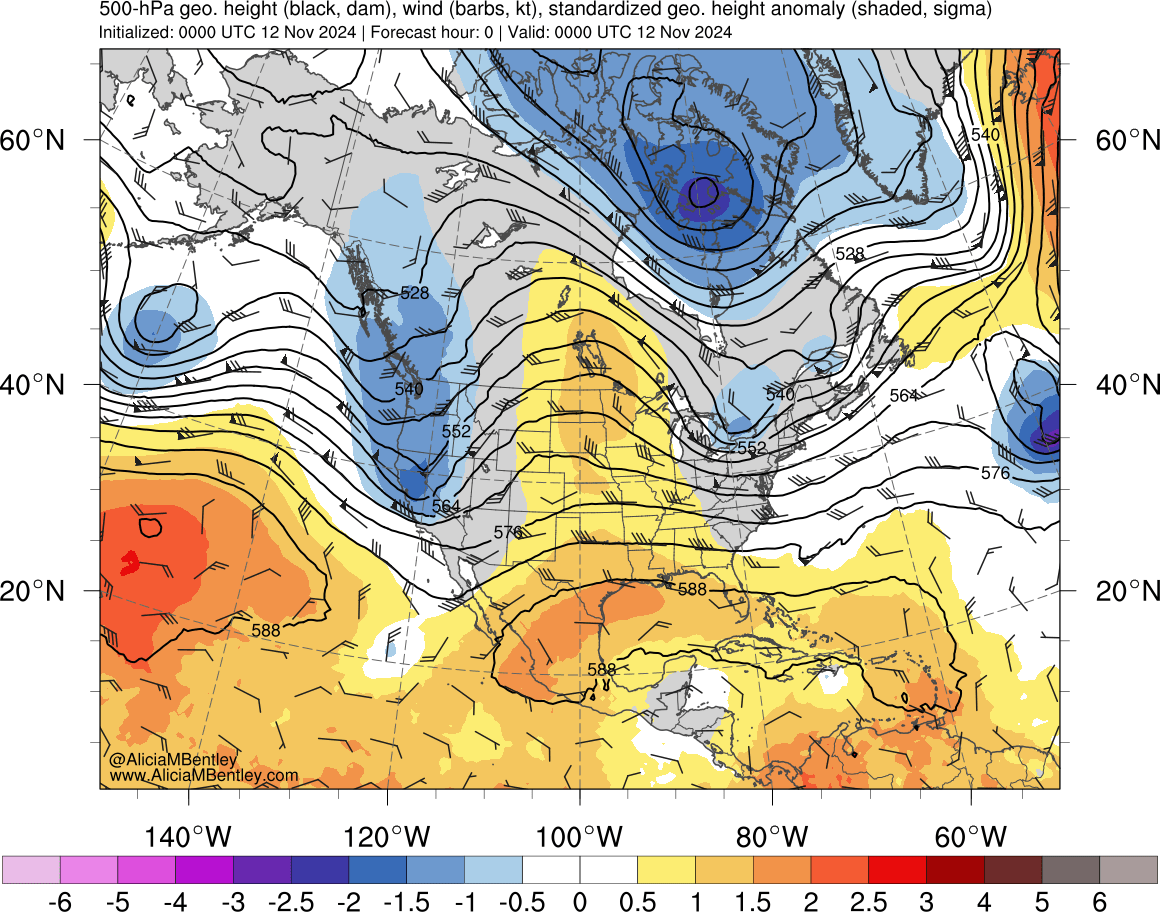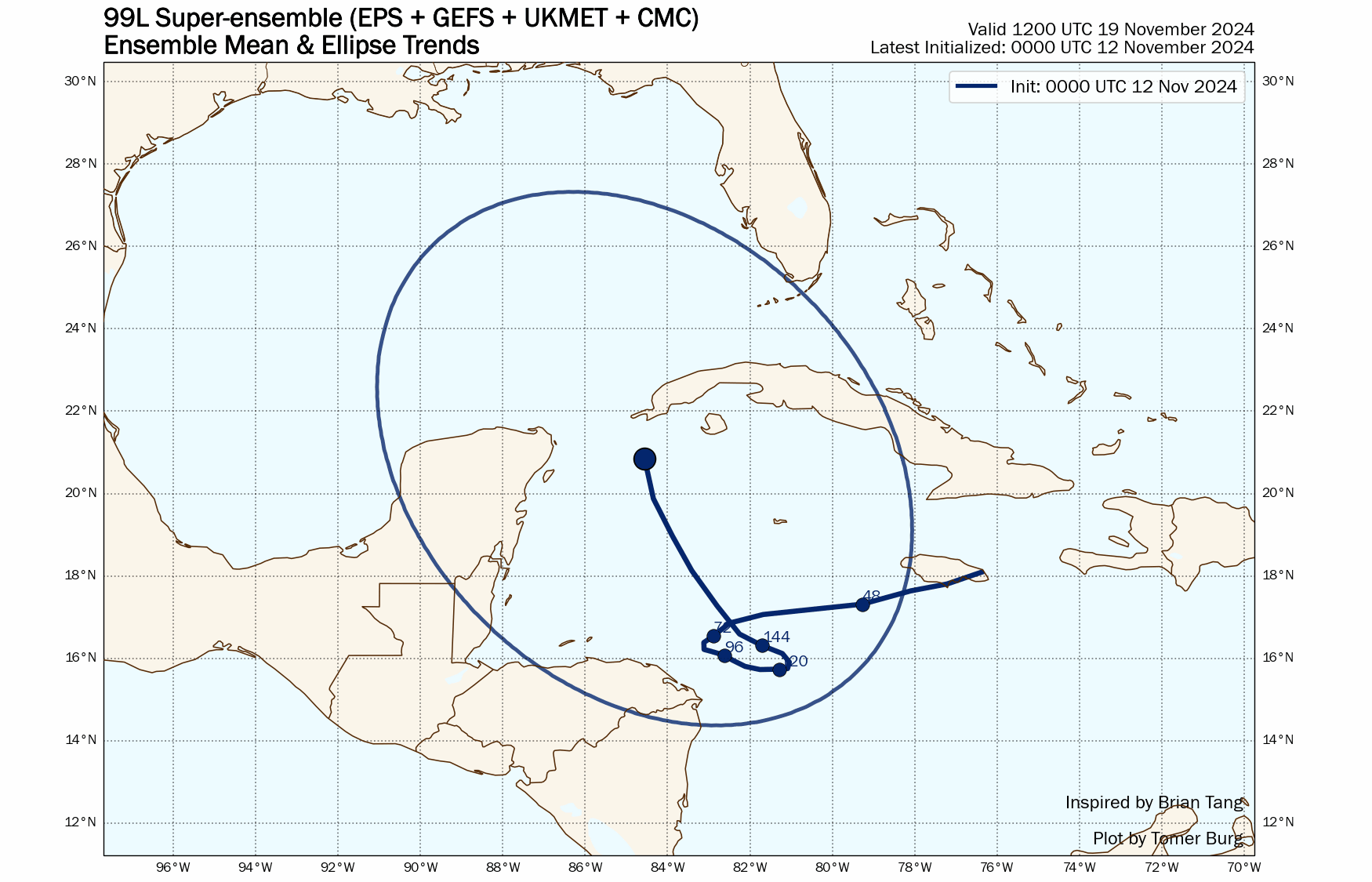
Trend in the last 7 runs of the GFS up through the evening of November 12, 2024.
But you still want to check more data, just to know for sure if it is clickbait or not. So you look at the trend in the last 7 runs of the GFS – and to your surprise, every single run shows a hurricane hitting the same region of Florida! Yes, it is still over a week away, but that run-to-run consistency gets you to start taking this scenario a bit more seriously. You also note how consistent not only the signal for a hurricane is, but also the part of Florida that it hits.

So it's not just the GFS... all of these deterministic global models on November 11-12 also showed a hurricane affecting Florida.
You start going through all of the other global deterministic models. The CMC (Canadian model) shows a sheared tropical storm. ICON (German model) shows a hurricane entering the Gulf of Mexico en route to Florida at the end of its run. Most alarmingly, the ECMWF (European model), which sometimes underestimates hurricanes in the medium range, also shows a major hurricane approaching Florida in multiple runs, and ECMWF's AI model (AIFS), which has done well with identifying potential hurricanes at longer lead times this year, also shows a hurricane affecting Florida.

GFS (left) and ECMWF (right) ensembles with many members showing a hurricane approaching Florida. Darker colors and larger dots indicate a stronger storm, while brighter colors and smaller dots indicate a weaker storm.
You check the GFS ensembles (GEFS), which is a 31-member ensemble, and the ECMWF ensemble (EPS), which is a 51-member ensemble. Many ensemble members also show a major hurricane approaching Florida. There is more variability than the deterministic runs, however – some ensemble members have the hurricane staying south/east of Florida, others have a tropical storm instead of a hurricane approaching Florida, and there's a small but noticeable subset of ensemble members that don't even bring the storm to Florida. Instead, they just have a weak storm lingering near the Central American coast.
You may still be tempted to brush those members off... but should you? You think back to other times when models were too strong with a hurricane, or showed a signal for a hurricane that didn't actually happen. But you think practically, about how Florida is still recovering from the devastation of multiple hurricanes, and realize that a lot of lead time is needed to prepare for another hurricane should it actually affect Florida. You start to weight the pros and cons of how much you should warn people about a potential hurricane over a week away.
If you warn too strongly about a hurricane too early and a storm doesn't happen, you risk being seen as exaggerating a forecast for engagement, or worse yet, preying on people's fears. If you wait until there's a stronger forecast signal and warn too late, and the hurricane does hit Florida, you risk giving people and decision makers too little time to prepare, or worse yet, be accused of withholding important information from the public – after all, everyone could see that models showed a hurricane over a week away.
Before we go into what is actually happening and where things went wrong, let's take a look first at the meteorology behind this storm, why models consistently showed a major hurricane approaching Florida over a week away, and why there was still a small subset of models that didn't show a hurricane.




